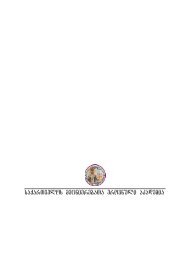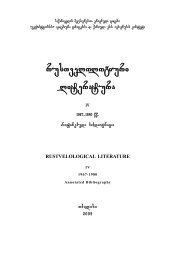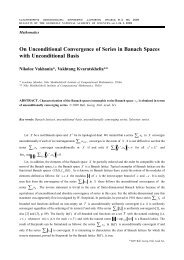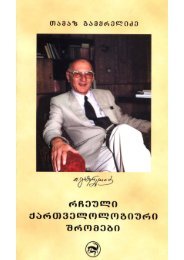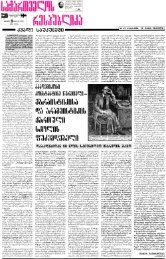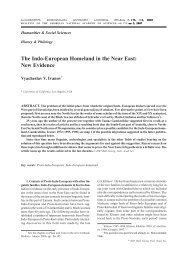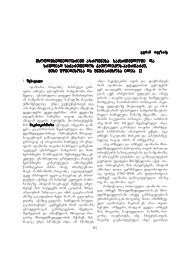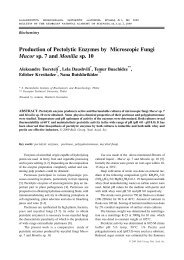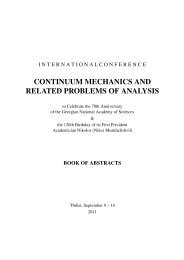Recent Trends in Nostratic Comparative Linguistics - The Georgian ...
Recent Trends in Nostratic Comparative Linguistics - The Georgian ...
Recent Trends in Nostratic Comparative Linguistics - The Georgian ...
You also want an ePaper? Increase the reach of your titles
YUMPU automatically turns print PDFs into web optimized ePapers that Google loves.
150 Allan R. Bomhard<br />
At this stage of research, we can confidently say that the follow<strong>in</strong>g languages/language families are to be <strong>in</strong>cluded<br />
<strong>in</strong> the <strong>Nostratic</strong> macrofamily: Afrasian (also called Afroasiatic, Hamito-Semitic, Semito-Hamitic), Elamo-Dravidian,<br />
Kartvelian, and Eurasiatic. Eurasiatic, <strong>in</strong> turn, <strong>in</strong>cludes the follow<strong>in</strong>g: Tyrrhenian (Etruscan, Raetic, and Lemnian), Indo-<br />
European, Uralic-Yukaghir, Altaic (Mongolian, Turkic, and Tungus), Chukchi-Kamchatkan, Gilyak (also called Nivkh),<br />
and Eskimo-Aleut. Other languages may belong as well, such as, for example, Korean and Japonic (Japanese-Ryukyuan).<br />
But much work needs to be done before these two groups can be conv<strong>in</strong>c<strong>in</strong>gly shown to be related to Altaic (itself quite<br />
controversial), as is often assumed, let alone <strong>Nostratic</strong>.<br />
3.0. A Sketch of Proto-<strong>Nostratic</strong> Phonology<br />
Proto-<strong>Nostratic</strong> had a rich system of stops and affricates. Each stop and affricate series was characterized by the<br />
three-way contrast (1) voiceless (aspirated), (2) voiced, and (3) glottalized. <strong>The</strong> aspiration of series (1) was phonemically<br />
non-dist<strong>in</strong>ctive.<br />
<strong>The</strong> Proto-<strong>Nostratic</strong> phonological system may tentatively be reconstructed as follows (cf. Bomhard 2008.1:213–<br />
220; see Dolgopolsky 1998:101 for a slightly different reconstruction):<br />
3.1. Remarks on the Vowels<br />
<strong>The</strong> follow<strong>in</strong>g vowels may be reconstructed for Proto-<strong>Nostratic</strong>: *a, *e, *i, *o, and *u. At least some of these<br />
vowels must have been subject to considerable subphonemic variation <strong>in</strong> the <strong>Nostratic</strong> parent language. <strong>The</strong> high<br />
front and back vowels *i and *u, <strong>in</strong> particular, may be assumed to have had lowered variants (<strong>in</strong>dicated <strong>in</strong> the Proto-<br />
<strong>Nostratic</strong> reconstructions as *e and *o respectively), while the central low vowel *a may be assumed to have had<br />
higher variants (<strong>in</strong>dicated <strong>in</strong> the Proto-<strong>Nostratic</strong> reconstructions as *@). To complicate matters, *e and *o must also<br />
have existed as <strong>in</strong>dependent vocalic elements. It was the reanalysis, phonemicization, and exploitation of this<br />
subphonemic variation that gave rise to the ablaut and vowel harmony pattern<strong>in</strong>g found <strong>in</strong> the majority of the<br />
Bull. Georg. Natl. Acad. Sci., vol. 2, no. 4, 2008



